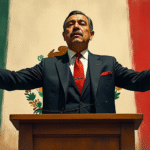Background on Key Players
Donald Trump, the President of the United States, unveiled a plan aiming for a definitive ceasefire in the Gaza Strip. However, this initiative appears to have faced significant challenges and criticism.
Benjamin Netanyahu, the Prime Minister of Israel, played a crucial role in negotiating this plan with Trump. Netanyahu’s stance on the matter is complex, as he knows Hamás will likely reject the proposal. Yet, by attending meetings at the White House and supporting Trump’s efforts, Netanyahu aims to bolster his international image and secure recognition for Palestine as a state.
Trump’s Dual Persona and Motives
There seems to be a discrepancy between two versions of Trump. One is the businessman who seeks to maximize the Net Present Value (NPV) of his investments. The other is the U.S. President advocating for an end to hostilities in Gaza.
The true Trump, according to the analysis, is driven by ambitions and disturbances that include seeking more recognition than Barack Obama achieved. If Trump transforms the Gaza Strip into a “future Dubai,” he could potentially win the Nobel Peace Prize and maximize his investment returns.
Hamás’ Stance and International Pressure
Bezalel Smotrich, Israel’s Finance Minister and a close ally of Netanyahu, opposes Trump’s proposal to Hamás. The reality is that the plan was negotiated by Netanyahu and Trump, with Netanyahu’s strategic non-criticism of the proposal aimed at garnering international support for Trump’s Nobel Peace Prize aspirations.
The international community desires an end to the violence in Gaza and applauds Trump’s proposal while pressuring Hamás. However, both Netanyahu’s government and Hamás show reluctance towards accepting Trump’s plan.
The Plan’s Unrealistic Nature and Recent Developments
Critics argue that Trump’s plan lacks realism, with point 19—acknowledging the possibility of a credible path towards Palestinian self-determination and statehood—being unlikely to be accepted by Netanyahu.
In a recent turn of events, Israel’s Foreign Ministry labeled Greta Thunberg’s environmental activism-focused trip to Gaza as “Greta and her friends” after the military detained her during a flotilla journey. This incident highlights Trump’s focus on public relations rather than genuine diplomacy.
Key Questions and Answers
- What is the main issue with Trump’s Gaza ceasefire plan? The plan faces significant criticism due to its unrealistic nature and the reluctance of both Netanyahu’s government and Hamás to accept it.
- Who negotiated the plan with Trump? The plan was primarily negotiated by Benjamin Netanyahu, the Prime Minister of Israel.
- Why is Hamás unlikely to accept the plan? Hamás has no interest in Palestine’s recognition as a state, and the proposed incentives are insufficient to sway their decision.
- What is the international community’s stance on Trump’s proposal? The international community desires an end to violence in Gaza and supports Trump’s efforts while pressuring Hamás.
- What recent event highlights Trump’s approach to diplomacy? Israel’s detention of environmental activist Greta Thunberg during her trip to Gaza demonstrates Trump’s emphasis on public relations over genuine diplomacy.






